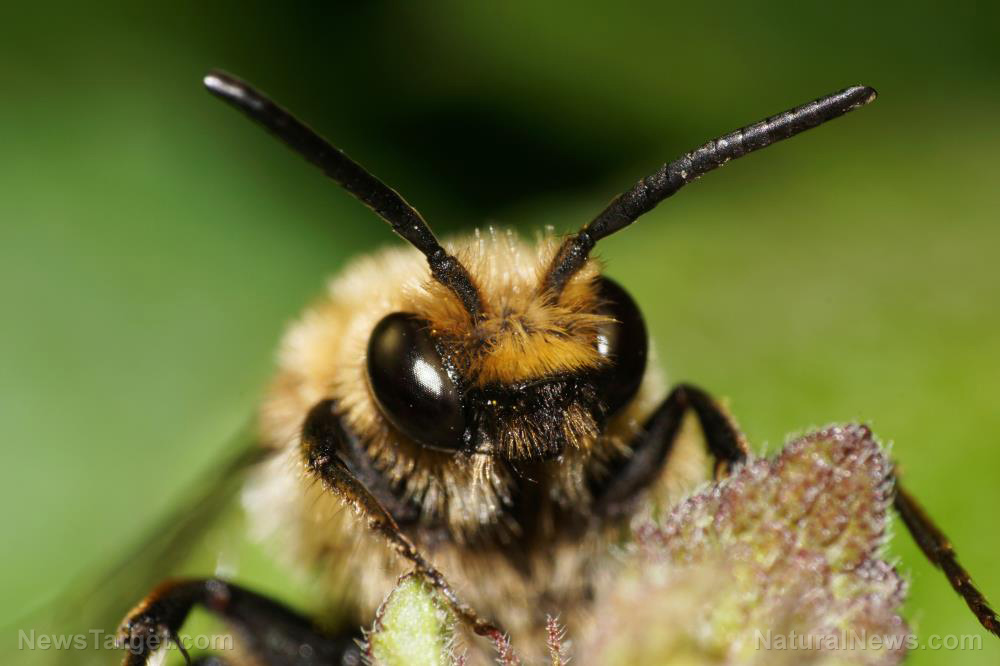Jumping worms are wreaking havoc in 15 US states
05/02/2021 / By Nolan Barton

Jumping worms are wreaking havoc in the ecosystems and garden soils of at least 15 U.S. states. Also known as crazy worms, Alabama jumpers and snake worms, they violently thrash when handled and shed their own tails to escape when put under duress.
Mature jumping worms are between four and five inches long. They have been sighted in New York, Minnesota, Wisconsin, Missouri, Illinois, Iowa, Nebraska, Ohio, Texas, Louisiana, Indiana, Kansas, Kentucky, Tennessee and Oklahoma.
Originating in East Asian countries Korea and Japan, jumping worms can quickly proliferate in a garden or forest, where their life cycle plays out in leaf litter and the top inch or two of soil. The worms of the genus Amynthas are believed to have been brought into the U.S. as fishing bait. They feed on organic matter in the soil, eating many of the crucial nutrients that plants, fungi and animals require to thrive.
Jumping worms rapidly digest organic material, out-competing native fungi species and even other non-native earthworms. In their wake, they leave behind thoroughly altered topsoil.
Gardeners often notice their presence indirectly by noting a change in the appearance of their garden soils. Soils infested with jumping worms are coarser than typical soils, with a granular appearance that looks similar to coffee grounds.
“These worms are known to damage plant roots, and alter water-holding capacity of the soil. This is especially a concern in our forests, where organic matter is limited. It is important to stop the spread of jumping worms,” Nicole Flowers-Kimmerle, Illinois University‘s agriculture and natural resources expert, wrote in her blog.
Due to their appetites for soil nutrients, the worms grow twice as fast as other species. They reproduce without mating and damage roots severely, making plants weak and more susceptible to pests, drought and disease. (Related: Flesh-eating worms have appeared in Florida.)
Population control is a problem, and experts have conceded there are no viable control measures in place to prevent the worms from spreading across the country. Jumping worms are typically found in the top few inches under the ground, and people are urged to keep an eye out for them from the mid-to-late summer period.
“Global worming” contributes to global warming
People have been moving worms for centuries. Worms from South America now tunnel through the global tropics. European earthworms now live on every continent except Antarctica.
Annise Dobson, a forest ecologist at Yale University, calls it “global worming.”
Interestingly, a study found that worms likely increase greenhouse gas emissions. Earthworms don’t produce much in the way of emissions themselves, but the soil they live in does.
In the study, published in Nature Climate Change, researchers from the U.S., Holland and Colombia compiled the results of 237 separate experiments from other published studies to explore earthworms’ role in global greenhouse gas emissions.
The authors of the study referred to earthworms as soil ecosystem engineers partly because they affect the physical structure of the soil by burrowing. Earthworms also interact with the microbes that produce the bulk of carbon dioxide emissions.
The presence of worms affects how much carbon dioxide is produced in the soil and how much escapes into the atmosphere. Scientists are concerned that earthworms increase greenhouse gas emissions, and that earthworm numbers are on the rise. The scientists in the study found that the presence of earthworms in soil increased nitrous oxide emissions by 42 percent and carbon dioxide emissions by 33 percent.
But it’s more complicated than that. Worms can increase emissions of one greenhouse gas while reducing emissions of the other. To work out the overall impact, scientists conducted experiments and found that earthworms increased the global warming potential of soils by 16 percent.
Jumping worms have the potential to remake North American forests
Of all the earthworms people have shuttled around the world, jumping worms have concerned scientists the most. They have the potential to remake the once wormless forests of North America.
Ecologists like Dobson fear that jumping worms pose an even greater threat than their European predecessors. Jumping worms appear to have many of the same effects, except that they grow larger and exist in dense colonies – sometimes numbering more than a hundred individuals per square meter of ground.
While European worms range throughout the upper four to six feet of soil, jumping worms stick to the top six inches or so, churning it relentlessly into loose sediment. The disturbed soil erodes easily, dries out quickly and generally makes poor habitat for many plants.
Dobson explained that worms act like a funnel, winnowing away the diversity of the forest. First, they take out the most sensitive native plants, leaving only hardy species. Then they prime the ground for invasive species.
Even more than their European relatives, jumping worms seem to reshape the forest from the ground up. “Every single thing that they do is transformative,” Dobson said.
North American hardwood forests used to have a thick blanket of slowly decomposing leaves deposited over the course of years, if not decades. That layer created a home for insects, amphibians, birds and native flowers.
But worms showed up and devoured the litter within the space of a few years. All the nutrients that have been stored up over time are released in one giant burst. Without cover, the invertebrate population in the soil collapsed. With their food and shelter gone, salamanders suffered and nesting birds found themselves dangerously exposed. (Related: “Wormnado” – Hundreds of worms cluster into a tornado-like pattern on New Jersey sidewalk.)
Plants like trillium, lady’s slipper and Canada mayflower vanished, too. This might be because the worms disrupted the networks of symbiotic fungus that many native plants depend on, or because worms directly consumed the plants’ seeds.
Worms have stellar reputation because of Charles Darwin
It’s hard to grasp the dangers pose by earthworms if you’ve been raised to believe that earthworms are good.
“They seem so symbolic of a healthy ecosystem,” Dobson said.
Worms have a stellar reputation because of Charles Darwin. In addition to developing the theory of evolution, Darwin studied earthworms for 40 years at his home in England.
Darwin conducted all manner of earthworm experiments. He observed their reaction to the sound of the bassoon (none) and to the vibrations of a C note played on the piano (panic). He watched how they pulled leaves into their burrows. Darwin also measured how quickly worms covered up a large paving stone in his garden with their castings. He estimated that they could move at least 10 tons of soil per acre per year.
In 1881, shortly before his death, Darwin compiled his worm studies into a book, which became a best seller and gave the worms’ dingy public image a makeover. Gardeners now rejoice to find earthworms in their soil.
Follow Ecology.news to know more about how organisms interact with one another and with their physical environment.
Sources include:
Tagged Under: carbon dioxide emissions, charles darwin, Collapse, Ecology, environ, food production, global warming, global worming, Greenhouse Gas, greenhouse gas emissions, harvest, home gardening, jumping worms, nitrous oxide emissions, organic matter, theory of evolution
RECENT NEWS & ARTICLES
COPYRIGHT © 2017 ENVIRON NEWS





















